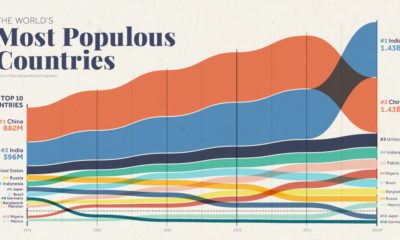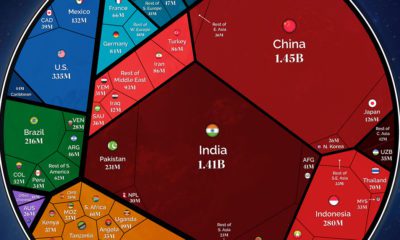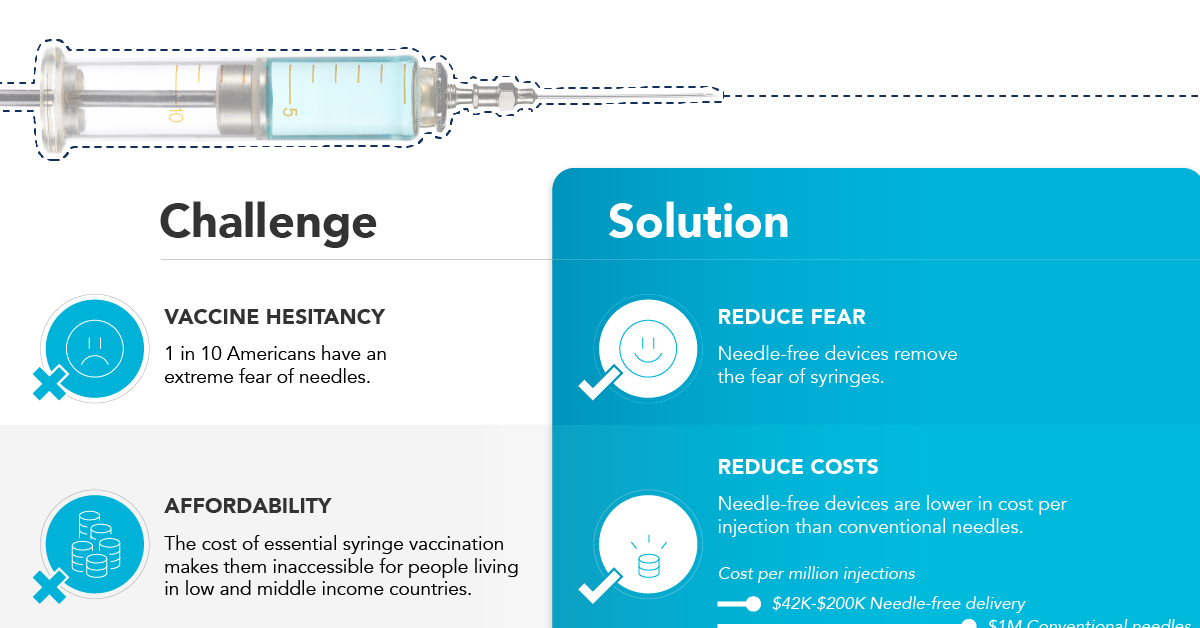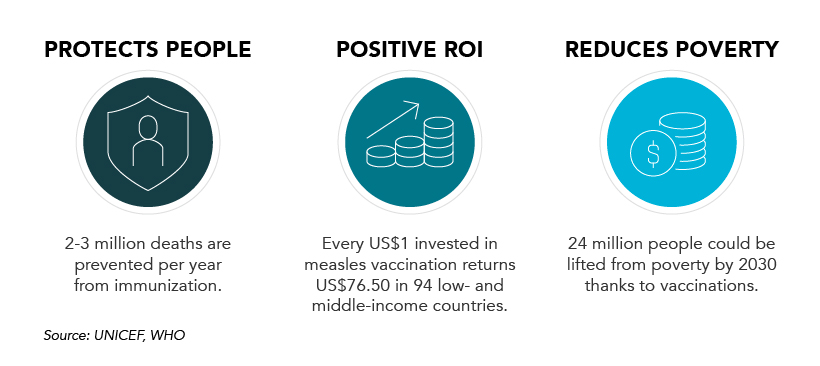This sea change can be attributed to multiple factors, ranging from medical advances to greater gender equity. But generally speaking, as more women gain an education and enter the workforce, they’re delaying motherhood and often having fewer children in the process. Today’s interactive data visualization was put together by Bo McCready, the Director of Analytics at KIPP Texas. Using numbers from Our World in Data, it depicts the changes in the world’s fertility rate—the average number of children per woman—spanning from the beginning of the 20th century to present day.
A Demographic Decline
The global fertility rate fell from 5.25 children per woman in 1900, to 2.44 children per woman in 2018. The steepest drop in this shift happened in a single decade, from 1970 to 1980. In the interactive graphic, you’ll see graphs for 200 different countries and political entities showing their total fertility rate (FTR) over time. Here’s a quick summary of the countries with the highest and lowest FTRs, as of 2017: At a glance, the countries with the highest fertility are all located in Africa, while several Asian countries end up in the lowest fertility list. The notable decade of decline in average global fertility can be partially traced back to the actions of the demographic giants China and India. In the 1970s, China’s controversial “one child only” policy and India’s state-led sterilization campaigns caused sharp declines in births for both countries. Though they hold over a quarter of the world’s population today, the effects of these government decisions are still being felt.
Population Plateau, or Cliff?
The overall decline in fertility rates isn’t expected to end anytime soon, and it’s even expected to fall past 2.1 children per woman, which is known as the “replacement rate”. Any fertility below this rate signals fewer new babies than parents, leading to an eventual population decline.
Experts predict that world fertility will further drop from 2.5 to 1.9 children per woman by 2100. This means that global population growth will slow down or possibly even go negative.
Africa will continue to be the only region with significant growth—consistent with the generous fertility rates of Nigeria, the DRC, and Angola. In fact, the continent is expected to house 13 of the world’s largest megacities, as its population expands from 1.3 billion to 4.3 billion by 2100.
on
In the above infographic from NuGen Medical Devices, we explore the factors leading to the syringe shortage and take a look at the company’s innovative needle-free solution that could play an important role in closing the immunization gap.
The Immunization Gap
Even before the COVID-19 pandemic, millions of people around the world struggled to get access to routine vaccinations. In fact, as of 2019 more than 19 million children around the world were considered to be “zero-dose” which means that they did not receive any routine vaccinations. Moreover, when the COVID-19 pandemic hit, global immunization dropped even further with 25 million children missing out on routine vaccines in 2021 alone.
Why is Immunization So Important?
Vaccinations prevent against over 20 life-threatening diseases and save between 2-3 million deaths per year, making them—as the WHO describes—the foundation of healthcare systems and an indisputable human right. As countries work through a backlog of vaccinations to close the immunization gap that has worsened since the pandemic, demand for syringes has significantly increased.
The Result: A Global Syringe Deficit
In 2022, the WHO warned that we could see a shortage of up to 2 billion syringes if manufacturing can’t keep up. This could result in the severe disruption to routine vaccinations and promote unsafe recycling of syringes in order to administer vaccines. But the issue goes far beyond a supply shortage of syringes. COVID-19 has brought conventional syringe vaccines into sharp focus, with many criticizing the challenges associated with them. With conventional needles facing so many challenges, it’s no surprise that investors are taking interest in viable alternatives. What’s more, these alternatives don’t just apply to vaccinations, they can also work for people with diabetes, dentists, and pet care.
Enter Needle-free Devices from NuGen MD
Needle-free devices have the potential to bridge the gap in immunization amid the global syringe shortage, solve some of the key challenges limiting vaccine uptake, and more importantly, benefit the lives of millions of people.
How Do They Work?
NuGen’s needle-free devices use a simple spring-loaded mechanism which uses pressure to release the liquid drug and penetrate the skin. In less than one-tenth of a second, the drug is dispensed more safely and evenly compared to needle syringes. It’s also virtually painless and leaves no mark on the skin.
Interested in investing in NuGen Medical Devices? To learn more about their plans to pioneer the future of needle-free drug delivery, click this link now.


























